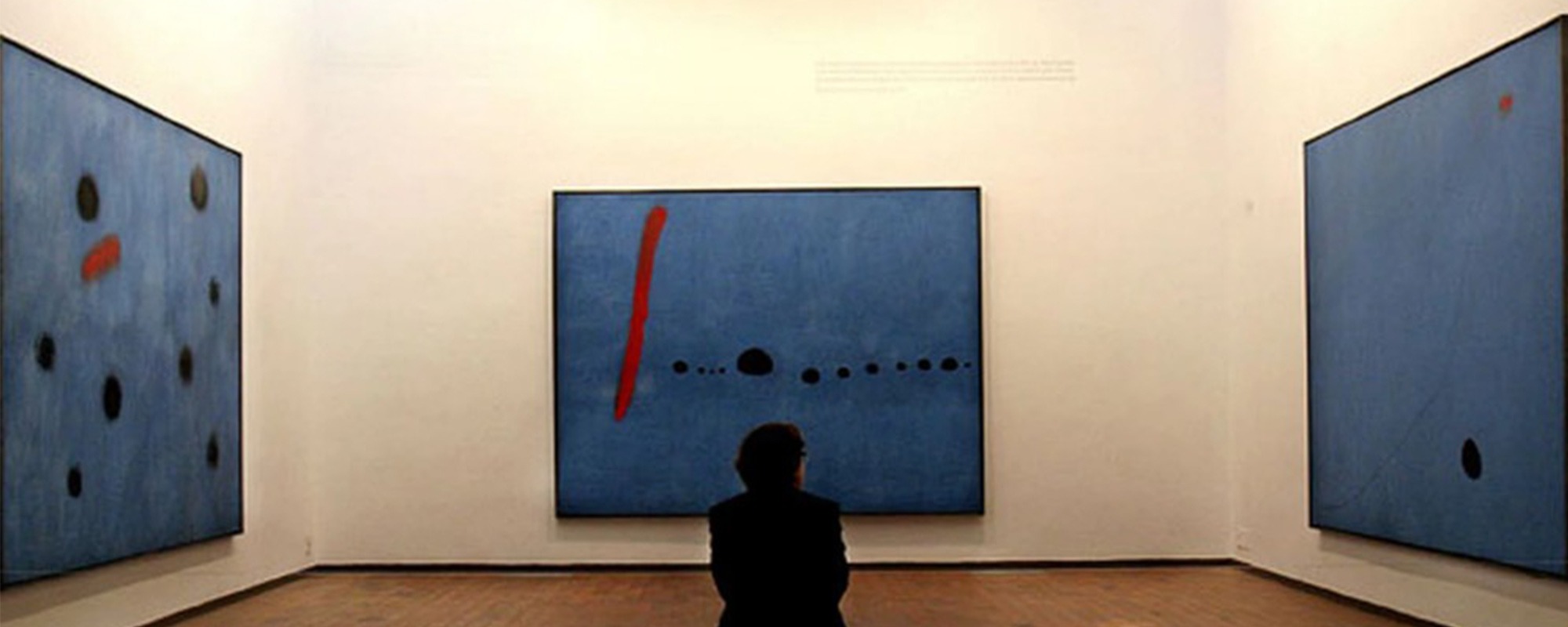Blue I, II, III
Fundamental Paintings to Understand the History of Painting
We could make this publication thanks to small donations. How is 3 minutos de arte supported?
Blue I, II, III (1961). Joan Miró
Oil on canvas. 270 cm x 355 cm each
Centre Pompidou. Paris
This is a work of Joan Miró’s maturity. These were the years in Palma de Mallorca when the artist was approaching 70 and reached a synthesis in his plastic and poetic search, in the search for harmony and spiritual serenity.
It was a period in which Miró made some trips to the United States and Japan, which enriched his experience in a decisive way.
On the one hand, in the United States, he became acquainted with a new kind of painting that was having a great impact: the color field painting of Mark Rothko. Rocko’s works are large, with areas of pure color that transmit emotions to the viewers who “immerse” themselves in them.
These colors act on the spirit of whoever observes them, as if it were a meditation. It is an experience of “almost religious” contemplation.
And obviously, these enormous canvases by Miró were influenced by those by Rothko. But let’s remember that, curiously, Rothko’s works are considered to belong to Abstract Expressionism, which in turn is influenced by Surrealism, which creates by releasing the unconscious in an automatic way, without reason intervening at all. The difference is that Surrealism creates with recognizable forms, and Abstract Expressionism creates with colors and brushstrokes, where no forms can be recognized. And let us also remember that Joan Miró, according to the founder of Surrealism himself, André Breton, is the most Surrealist of all.
We also find in this triptych another evident influence: that of Japanese poetry, with its simple beauty, (haikus are poems of only three lines). A beauty that we find not only in words but also in all Japanese visual art.
Blue is, in short, a spiritual work. A work where the artist, with color, with a few dots and simple strokes, makes us feel the vastness of the universe, its harmony, its beauty, and its infinite silence.
Miró was approaching 70 years of age, but his flame, far from being extinguished, shone serenely.
Recommended links:
Abstract Expressionism, Liberation of Emotions.
Genres and techniques: psychic automatism.
You can also find more material using the search engine.




0 Comments